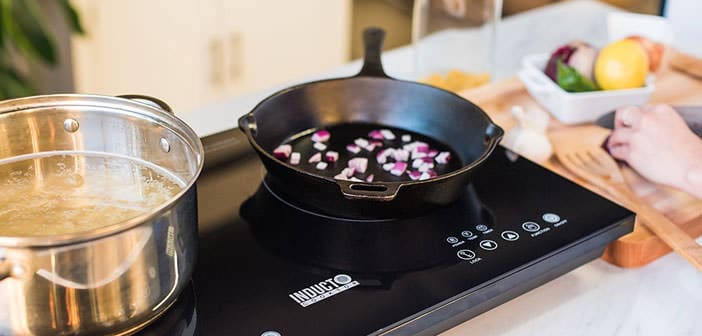Induction Cooktop or Gas: Which is Better to Choose and What are the Differences?
Induction cooktop or gas cooktop: which power source to choose? What are the pros and cons and what are the results in terms of yield? Let’s see what are the main features and differences between the two types, to understand how to choose the right and the most convenient solution for your home.
If you are looking for a stove for your new kitchen, you will certainly face a widespread dilemma: induction or gas. Choosing is not simple because we often do not know the differences. If everyone knows that gas cooktops have always been present in all homes, the same cannot be said of the most modern induction plans.
Extremely efficient and much higher efficiency than the classic gas models, induction cooktops are often viewed with high costs. But what advantages do they offer?
Are they more efficient than gas? This guide will examine the question, pros, and cons and determine the best solution for different needs.
Table of Contents
Induction Cooktops: Operation and Advantages.
Induction cooktops do not work on gas but are powered by electricity. They consist of an aesthetically exquisite glass-ceramic top under which the coils are located.
These are the fulcrum of the entire system: they generate a magnetic field transmitted directly to the pans, generating within them the heat necessary for cooking food without dispersion in the external environment.
Energy saving is evident: energy is only addressed where needed, with a much lower thermal dispersion than gas models. The performance of gas models is around 40%, compared to 90% of induction models. In terms of energy efficiency, there are no comparisons.
Furthermore, induction ensures fast and uniform cooking. To get a reference: to bring to boil a pot of water is only 3 minutes. It is complicated to resist induction cooktops’ charm if we add extreme ease of cleaning.
We summarize the advantages of induction:
- Efficiency and energy efficiency.
- Elegant and modern design.
- Fast and uniform cooking.
- Technologically advanced plans.
- Practicality and ease of cleaning.
What are the disadvantages?
- Purchase costs are much higher than traditional gas cookers.
- We must use suitable induction cookware with a flat bottom and ferrous material. Adapter discs are also on the market for using normal cookware, but the yield is different.
Consumption
As we have seen, induction plans operate via electricity and force users to enter into an ad-hoc contract with the supplier. The reason is simple: more coverage than standard is required to meet the energy needs of an induction cooktop. It will be necessary to go from 3.3 kW to at least 4.5 kW, or 6 kW.
Maximum capacity, an induction cooker can absorb up to 3500 W. In this case, a saltier electric bill must be considered in the purchase, compared to gas savings.
Induction Cooktop or gas: which to choose?
The decision depends a lot on your preferences and budget. However, suppose the economic factor is not a problem. In that case, induction cooktops are a modern and highly efficient solution that adapts perfectly to the needs of those more attentive to design.
If you plan your new home and your budget allows it, it is worth considering this option. On the other hand, if the budget does not allow such an important purchase, and you do not want to consider an additional expense for replacing the pots, the gas tops are an always valid alternative that never goes out of fashion.

